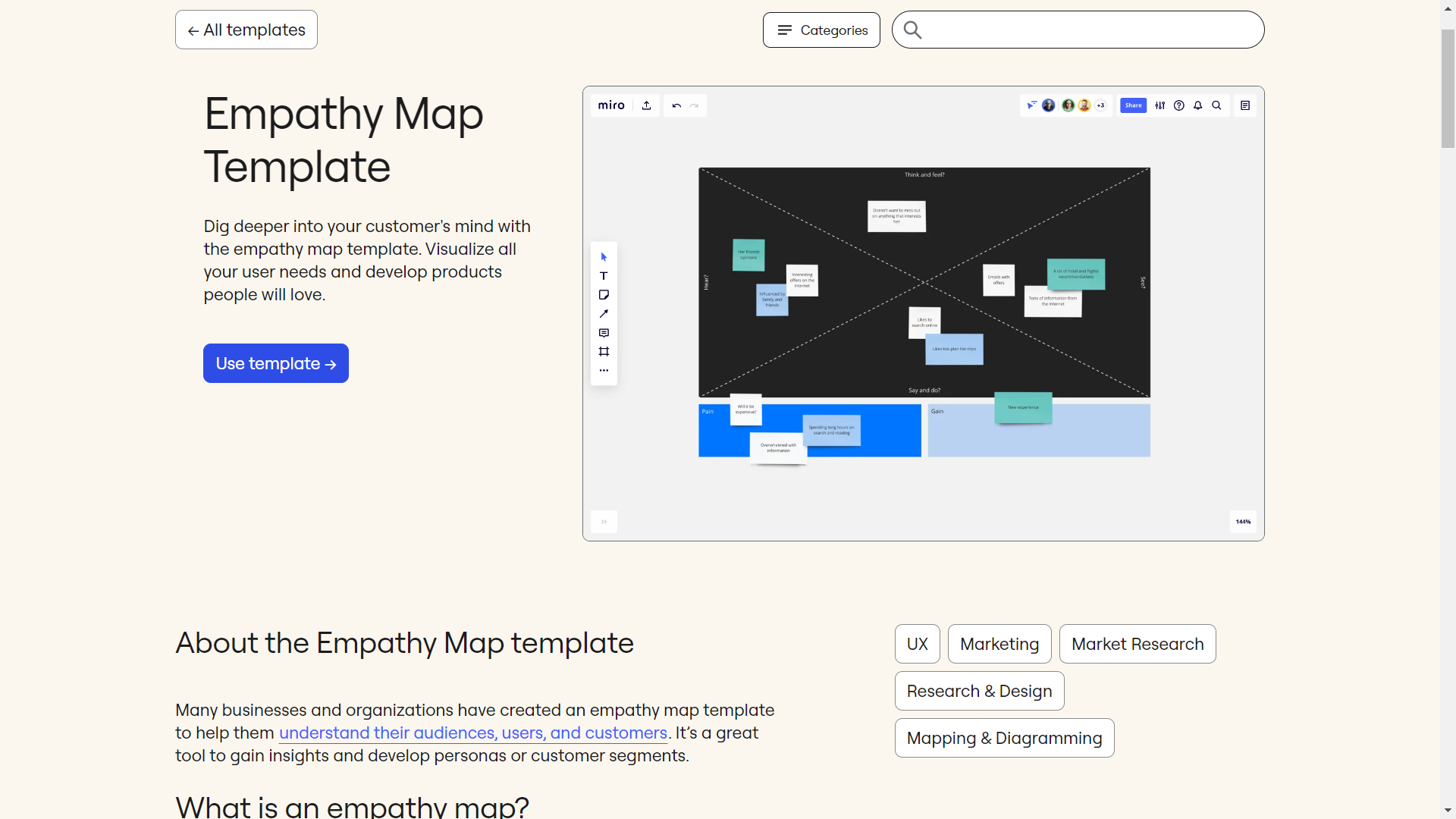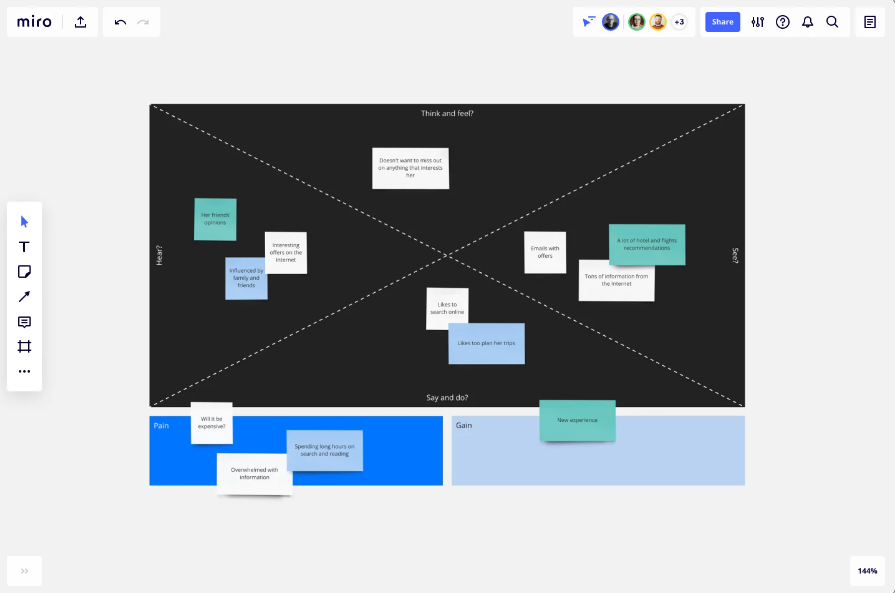Overview:
Empathy mapping focuses on capturing the essence of user experiences, encompassing what they say, think, do, and feel. This technique is crucial for developing accurate user personas. Integrating Miro into empathy mapping enhances this explorative journey, offering a collaborative and dynamic space where teams can collectively visualize and analyze user insights, leading to more user-centric product designs.
Empathy mapping is a critical tool in user experience (UX) design and product management, offering deep insights into users’ needs, desires, pains, and gains. This method aids in developing comprehensive user personas, guiding teams to create products that resonate deeply with their target audience. Below, I outline the process of empathy mapping, its advantages and disadvantages, and how Miro, an online collaborative whiteboarding platform, can be utilized to facilitate this process.
Steps for Creating an Empathy Map Using Miro:

- Gathering a Diverse Team:
Begin by assembling a diverse group of team members from different departments to ensure a wide range of perspectives. - Setting Up the Workspace:
Use Miro to set up a digital workspace. Choose from a variety of empathy map templates or create a custom layout. - Defining User Segments:
Identify the user segments for whom the empathy map is being created. This might be based on prior research or initial hypotheses about the target audience. - Populating the Empathy Map:
Fill in the different sections of the empathy map:- Say: What the users verbally share about their experiences.
- Think: What they might be thinking, their motivations, and concerns.
- Do: The actions they take in relation to the product or service.
- Feel: Their emotional responses, frustrations, and joys.
- Encouraging Collaboration:
Utilize Miro’s collaborative features to allow team members to contribute simultaneously. This can include adding notes, images, and comments. - Analyzing and Synthesizing:
Review the completed empathy map to identify patterns, insights, and contradictions. Discuss these as a team to gain a deeper understanding of the user. - Developing Personas:
Use the insights gained from the empathy map to create detailed user personas, which will guide future product development decisions.
Pros of Empathy Mapping:

- Enhances understanding of the user's emotional and psychological experiences.
- Fosters a user-centric approach in product development.
- Encourages collaboration and diverse perspectives within teams.
- Aids in identifying unmet needs and potential areas for innovation.
Cons of Empathy Mapping:
- May be based on assumptions if not supported by actual user data.
- Can be time-consuming and may require facilitation skills.
- Risk of bias if the team members’ perspectives over-influence the mapping.
Using Miro for Empathy Mapping:

- Interactive and User-Friendly: Miro’s intuitive interface allows team members to easily add and modify content in real-time.
- Templates and Tools: Access to various templates streamlines the empathy mapping process.
- Remote Collaboration: Enables teams, regardless of their location, to work together synchronously.
- Documenting and Sharing: Miro allows for easy documentation and sharing of the empathy map with stakeholders.
Empathy mapping, especially when facilitated by tools like Miro, provides a powerful avenue for understanding users beyond surface-level interactions. It encourages teams to delve into the emotional and cognitive aspects of user experiences, leading to products that are not only functional but also empathetically aligned with the users’ needs and expectations.



